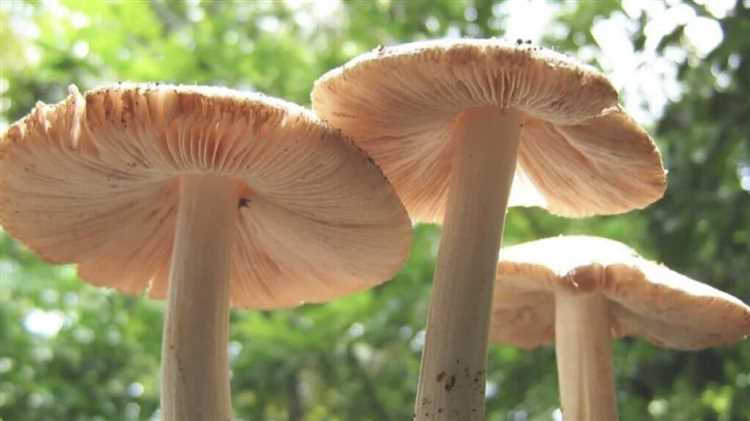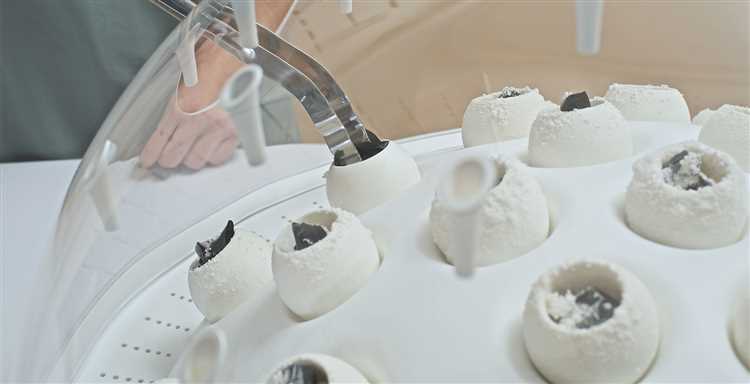In a world grappling with the grave consequences of plastic pollution, scientists are turning to nature for innovative solutions. One such solution that has been making headlines is the potential of mushrooms to eat plastic. But can these fungi really devour one of the world’s most persistent pollutants? Let’s dig deeper to uncover the truth.
Plastic pollution has reached alarming levels, with an estimated 8 million metric tons of plastic entering our oceans every year, according to a report by the Ellen MacArthur Foundation. Traditional methods of plastic disposal, such as incineration and landfilling, contribute to greenhouse gas emissions and further damage our environment. This has led scientists to explore alternative ways to tackle this global crisis.
Mushrooms, with their unique ability to decompose organic matter, have emerged as a potential solution to the plastic problem. Researchers have discovered a strain of fungus, known as Pestalotiopsis microspora, that can break down polyurethane, a common plastic found in everyday items like furniture and shoes. This breakthrough has sparked excitement and ignited hopes for a sustainable and natural solution to plastic waste.
However, while the prospect of mushrooms eating plastic holds great promise, there are still many challenges to overcome. For one, scale is a significant factor. The ability of mushrooms to degrade plastic in laboratory conditions does not necessarily translate to real-world scenarios, where vast quantities of plastic waste are scattered across our planet. Additionally, the process of decomposition can be slow and might require specific conditions that are not easily replicable in the environment.
So, can a mushroom really eat plastic? While the research is promising, it is essential to approach this solution with cautious optimism. Further studies are needed to understand the full potential of mushrooms in plastic degradation and to assess the long-term effects of this process on the ecosystem. In the meantime, we must continue to reduce, reuse, and recycle plastic to minimize its impact on our planet and explore a range of sustainable alternatives.
- Understanding the Mushroom’s Capability to Consume Plastic
- Exploring the Scientific Research and Experiments
- The Unique Properties of Fungi that Enable Plastic Decomposition
- Biodegradation of plastics by fungi
- Assessing the Potential Environmental Impacts
- Q&A
- Can mushrooms really eat plastic?
- How do mushrooms digest plastic?
- Can mushrooms completely eliminate plastic waste?
- Are there any drawbacks or limitations to using mushrooms to eat plastic?
Understanding the Mushroom’s Capability to Consume Plastic

Over the past few years, there has been growing interest in the potential of mushrooms to biodegrade and consume plastic. This phenomenon has caught the attention of scientists and researchers worldwide, as it offers a potential solution to the global plastic pollution problem.
Mushrooms belong to a group of organisms called fungi, and they have unique properties that allow them to break down a wide range of organic materials, including plastic. The process is facilitated by enzymes produced by mushrooms that can degrade complex compounds found in plastic.
One type of mushroom that has gained significant attention is the fungus pestalotiopsis. This particular mushroom has been found to consume and break down certain types of plastic, such as polyurethane, which is commonly used in many plastic products. Studies have shown that the enzymes produced by this mushroom can effectively degrade the chemical bonds in polyurethane, resulting in its decomposition into harmless byproducts.
However, it is important to note that the ability of mushrooms to consume plastic is not a solution to the plastic pollution problem on its own. While these organisms can play a role in breaking down plastic waste, they do not address the root causes of plastic pollution, such as excessive production and improper disposal of plastic products.
The research surrounding the ability of mushrooms to consume plastic is still in its early stages, and there is much more to learn about these organisms’ capabilities. Scientists are working to further understand the mechanisms behind this process and explore the potential applications of mushrooms in plastic biodegradation.
In conclusion, while mushrooms possess the unique capability to consume and break down certain types of plastic, their use alone is not a complete solution to the plastic pollution problem. However, further research and exploration of this phenomenon may provide valuable insights and contribute to a more sustainable approach to managing plastic waste in the future.
Exploring the Scientific Research and Experiments
In recent years, scientists have been conducting a series of groundbreaking experiments to determine the true potential of mushrooms in eating plastic. These experiments have revealed some fascinating results and shed light on the promise of harnessing the power of fungi to tackle plastic pollution.
One such experiment involved exposing different species of mushrooms to various types of plastic, including polyethylene and polystyrene. Researchers were astounded to find that certain species of mushrooms were able to not only survive but actually break down the plastic, effectively “eating” it. This discovery opened up new possibilities for using mushrooms as an eco-friendly solution to plastic waste.
Further research has focused on understanding the mechanisms behind this plastic-eating ability of mushrooms. Scientists have identified certain enzymes and chemical compounds in mushrooms that are able to degrade the complex structure of plastic molecules. By studying these enzymes and their interactions with plastic, researchers hope to develop effective ways to speed up the process and maximize the plastic-consumption capabilities of mushrooms.
Some scientists have even taken the research a step further by exploring the potential applications of plastic-eating mushrooms. For example, some researchers envision using fungi to create sustainable packaging materials or even to clean up plastic waste in contaminated environments. These experiments have shown promising results, giving hope that mushrooms might hold the key to a more sustainable future.
However, it’s important to note that while mushrooms have demonstrated the ability to consume certain types of plastic, their capacity is not unlimited. The speed and efficiency with which mushrooms can break down plastics vary depending on factors such as the species of mushroom, the type of plastic, and environmental conditions. Further research is needed to fully understand the limitations and optimize this process.
In conclusion, the scientific research and experiments conducted on the ability of mushrooms to eat plastic have produced exciting and promising results. They have opened up new possibilities for using fungi as a natural and sustainable solution to the global plastic pollution problem. With continued research and experimentation, we may soon see mushrooms playing a crucial role in reducing plastic waste and creating a cleaner, greener world.
The Unique Properties of Fungi that Enable Plastic Decomposition

Fungi are a highly diverse group of organisms that play a crucial role in ecosystem functioning. They possess unique properties that make them capable of decomposing various types of organic matter, including plastic.
One of the key properties of fungi is their ability to produce a wide range of enzymes. These enzymes enable fungi to break down complex molecules found in plastic polymers, such as polyethylene, polypropylene, and polystyrene. Fungi produce enzymes like laccase, peroxidase, and cutinase, which can degrade the chemical bonds present in plastics.
Furthermore, fungi have a remarkable ability to adapt to different environmental conditions. They can thrive in diverse habitats, ranging from soil and water to extreme environments like deserts and Antarctica. This adaptability allows fungi to colonize plastic waste sites and establish symbiotic relationships with other organisms, such as bacteria and algae, that further enhance the decomposition process.
In addition, fungi possess a unique mechanism called mycelium, which consists of thread-like structures that form a network and spread through the substrate. This mycelial network enables fungi to efficiently break down large plastic pieces into smaller fragments, increasing the surface area available for decomposition.
Biodegradation of plastics by fungi
The biodegradation process of plastics by fungi begins with the mechanical breakdown of larger plastic pieces by the mycelial network. The enzymes secreted by the fungi then act on the broken-down plastic fragments, breaking the chemical bonds and converting them into smaller compounds. These compounds can be further metabolized by the fungi or utilized by other organisms in the ecosystem.
It is important to note that the biodegradation of plastics by fungi is a gradual process that can take weeks, months, or even years, depending on various factors such as the type of plastic, environmental conditions, and the presence of other organisms. However, research has shown promising results in utilizing fungi for plastic decomposition, and further studies are being conducted to optimize the process and explore its potential applications.
In conclusion, fungi possess unique properties that enable them to decompose plastic. Their production of diverse enzymes, adaptability to different environments, and the formation of mycelial networks contribute to the efficient breakdown of plastic polymers. The biodegradation process of plastics by fungi has the potential to be an effective solution for reducing plastic waste and mitigating its environmental impact.
Assessing the Potential Environmental Impacts
While the ability of mushrooms to consume plastic holds great promise for waste management, it is important to carefully consider the potential environmental impacts of this process.
One potential concern is the release of harmful byproducts into the environment as mushrooms break down plastic. While research has shown that certain types of mushrooms can effectively degrade plastic, it is crucial to ensure that this process does not result in the release of toxic substances that could harm ecosystems.
Another consideration is the long-term effects of introducing plastic-consuming mushrooms into natural environments. The introduction of non-native species can have unintended consequences, such as outcompeting native species or disrupting natural food chains. Therefore, thorough ecological studies are necessary before widespread implementation of this technology.
Additionally, the scalability of mushroom-based plastic degradation should be assessed. While laboratory experiments have shown promising results, it is important to determine whether this process can be efficiently scaled up to handle the massive amounts of plastic waste generated globally.
Overall, while the ability of mushrooms to eat plastic presents a potential solution to the mounting plastic waste problem, a careful assessment of the environmental impacts is essential to ensure the sustainability and safety of this approach.
Q&A
Can mushrooms really eat plastic?
Yes, certain types of mushrooms have the ability to break down and decompose plastic. Scientists have discovered that certain species of mushrooms produce enzymes that can degrade and consume plastics, such as polyurethane and polystyrene.
How do mushrooms digest plastic?
Mushrooms have a unique enzyme called “polyurethanase” that allows them to break down the chemical bonds in plastic. This enzyme helps the mushrooms to digest and consume the plastic effectively, turning it into organic matter.
Can mushrooms completely eliminate plastic waste?
While mushrooms have the ability to break down certain types of plastics, their efficiency in completely eliminating plastic waste on a large scale is still being researched. It is a promising area of study, but more research and development is needed before mushrooms can be relied upon as the sole solution to plastic waste.
Are there any drawbacks or limitations to using mushrooms to eat plastic?
Using mushrooms to consume plastic does have some limitations. For example, the process is typically slow, taking several weeks or even months for the plastic to completely break down. Additionally, mushrooms are selective in the types of plastic they can degrade, and not all plastics are suitable for mushroom consumption. It is also important to consider the environmental impact of using mushrooms, such as the potential spread of invasive mushroom species.